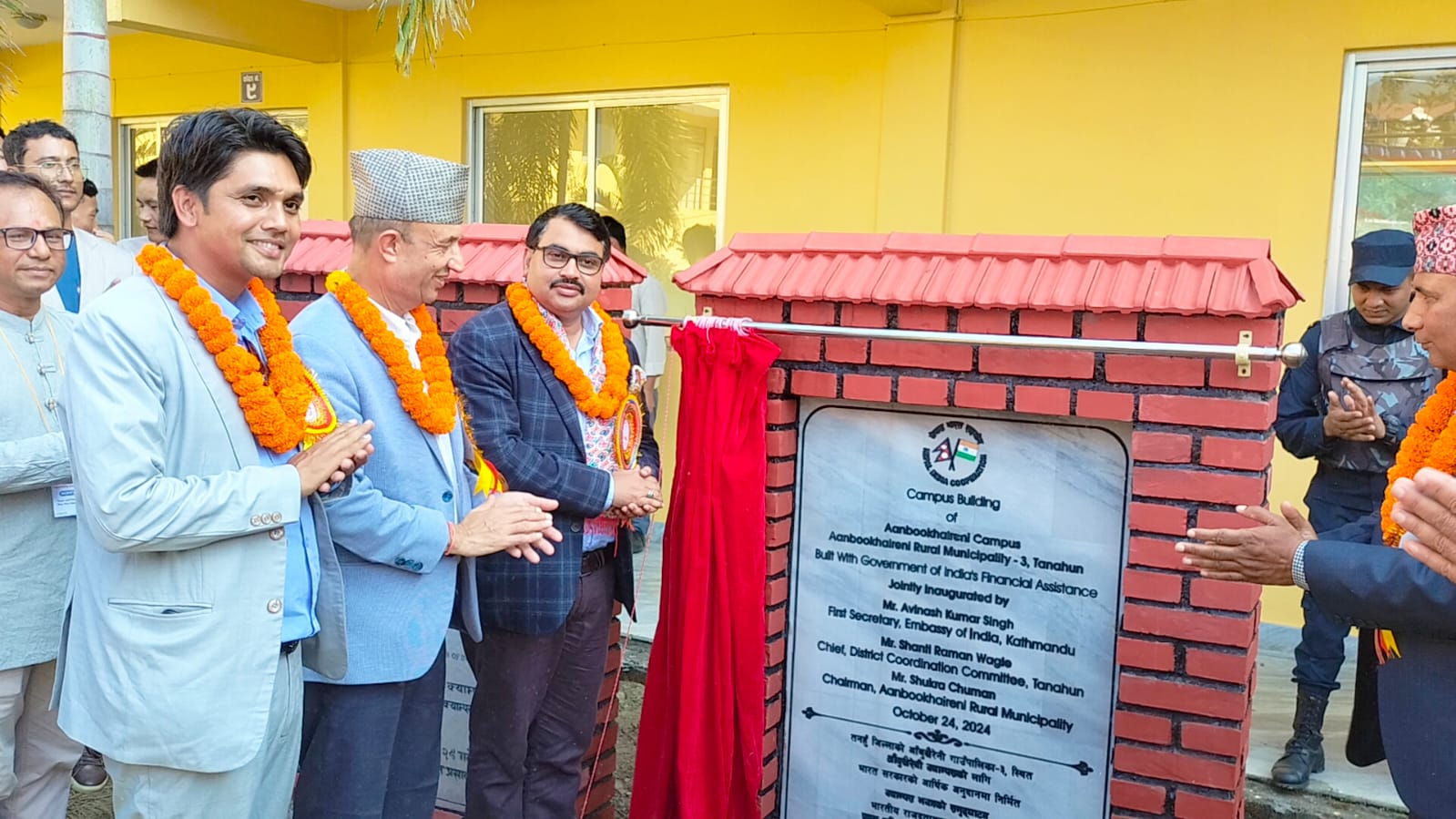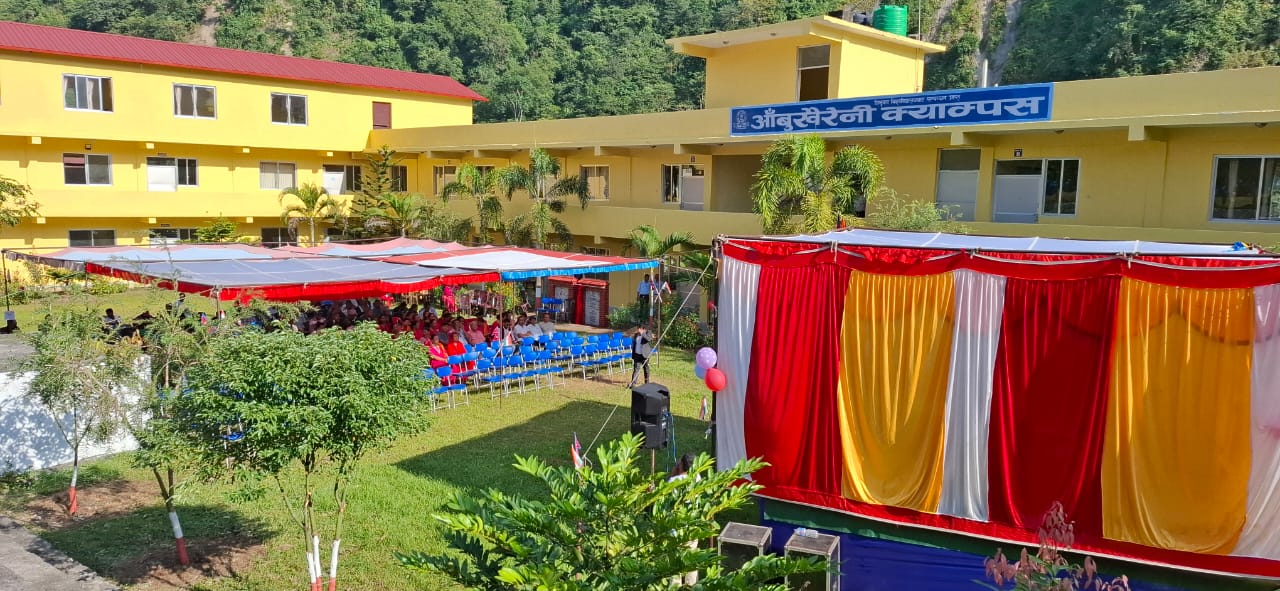New Campus Building to Transform Tanahun's Education – A Lasting India-Nepal Model!

The newly constructed campus building of Aanbookhaireni Campus in Tanahun, built with financial assistance from the Government of India, was inaugurated today. The project, implemented under the ‘Nepal-India Development Cooperation’ framework as a High Impact Community Development Project (HICDP), reflects the strong bilateral ties between Nepal and India. This initiative marks a significant investment in the educational infrastructure of the region, with the total project cost amounting to NRs. 30.01 million.
The inauguration was jointly led by Shri Avinash Kumar Singh, First Secretary, Embassy of India, Kathmandu, Mr. Shanti Raman Wagle, Chief, District Coordination Committee, Tanahun, and Mr. Shukra Chuman, Chairman of Aanbookhaireni Rural Municipality. The event saw the participation of local political representatives, educators, and community members, all highlighting the value of such developmental projects in the region.
Transformative Impact on the Region
The completion of this double-storied campus building has the potential to bring transformative changes to the Tanahun region. As a community-based institution affiliated with Tribhuvan University (TU), Aanbookhaireni Campus serves approximately 300 students, 90% of whom are female. The improved infrastructure will foster an enhanced learning environment, providing better access to higher education for the youth in this rural community.
By offering Bachelor of Business Studies (BBS) and Bachelor of Education (B.Ed) programs, the campus plays a crucial role in nurturing future educators and business professionals. This new facility ensures that students will have access to better resources, which will contribute to their academic success and professional development. In the long term, these graduates will bring valuable skills to the local economy, potentially spurring economic development and social progress in the region.
A Model Program for Sustainable Development

What sets this project apart is its potential to serve as a model for future educational and infrastructure development initiatives. Unlike other forms of foreign aid, which may focus on temporary solutions or consumable resources, the construction of educational buildings creates long-lasting benefits. Such projects, funded by India, provide tangible, enduring assets that will benefit not only the current generation of students but also future generations.
The project's success lies in its alignment with the core priorities of the Nepalese government and local communities, focusing on education as a key sector for sustainable development. This campus building will not only meet the immediate educational needs but will also become a permanent fixture of the local community, providing opportunities for learning, skill development, and empowerment for years to come.
Enhancing Nepal-India Cooperation
The support for this project under the HICDP framework reflects the Indian Embassy's long-term commitment to fostering cooperation in sectors that directly impact people's lives, such as education and infrastructure. The Nepal-India Development Cooperation has consistently prioritized building tangible infrastructures, which serve as lasting symbols of bilateral friendship and shared progress.
Such projects, by addressing critical gaps in infrastructure, set a precedent for future development efforts. This initiative demonstrates how India’s development assistance goes beyond short-term aid, focusing on community-driven projects that have a long-lasting impact.
Conclusion: A Step Towards Regional Upliftment
The inauguration of the Aanbookhaireni Campus building underscores the importance of sustained investments in education for regional development. With a clear focus on fostering an improved learning environment, this project is poised to contribute significantly to the educational advancement of the region. Moreover, it exemplifies how community-based projects can have a far-reaching impact, setting a blueprint for future infrastructural projects in Nepal.
This model of development cooperation, focused on education, can inspire similar projects in other parts of Nepal, ensuring that future generations continue to benefit from robust infrastructure that enhances both education and overall community welfare.




![From Kathmandu to the World: How Excel Students Are Winning Big [Admission Open]](https://nepalaaja.com/img/70194/medium/excel-college-info-eng-nep-2342.jpg)
